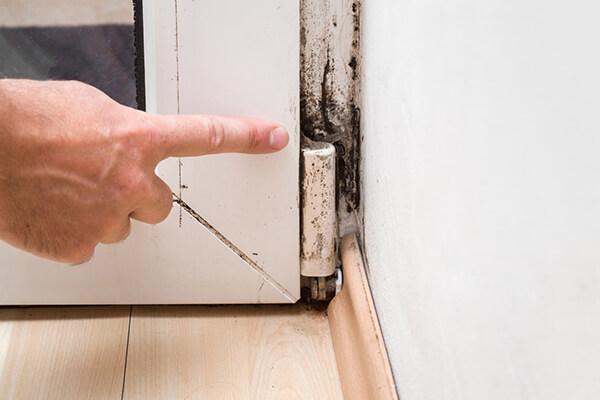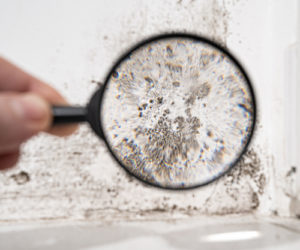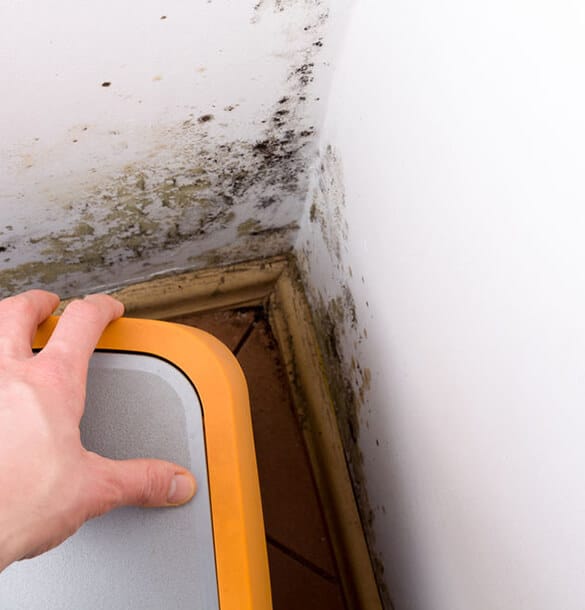Accessing Local Post Remediation Mold Testing Near Me
Wiki Article
Effective Post Mold Removal Solutions for Your Home
Mold development in homes can be a persistent issue, often needing a systematic strategy for efficient post-remediation solutions. From comprehending the factors that add to mold development to applying proper cleansing techniques and dampness control measures, the procedure can be intricate yet vital for maintaining a healthy and balanced living environment. what to do after mold remediation.Understanding Mold And Mildew Development Factors
The main aspect adding to mold growth is wetness. Mold spores require moisture to thrive and sprout, making moist or wet atmospheres highly prone to mold and mildew infestations.
In addition, air flow and light exposure can influence mold development. Areas that do not have proper air flow and natural light are much more prone to mold and mildew development. By resolving these elements adequately, individuals can successfully reduce mold and mildew growth and secure their living environments.
Proper Mold Cleansing Methods
Using efficient cleaning methods is crucial in stopping the reoccurrence and attending to of mold contamination in interior settings. The initial action in appropriate mold cleaning is to contain the afflicted area to prevent the spread of spores to uncontaminated locations.
Implementing Moisture Control Procedures
To properly prevent mold development and contamination in interior settings, implementing moisture control procedures is extremely important. Dampness is the primary element that fuels mold and mildew growth, making it critical to manage humidity levels within the home. One efficient procedure is to make use of dehumidifiers to keep interior moisture degrees listed below 60%. In addition, ensuring proper ventilation in areas prone to moisture buildup, such as kitchen areas and shower rooms, can help in reducing the danger of mold growth. On a regular basis checking and fixing any type of leaks in plumbing, roofing systems, or windows is also important in avoiding excess moisture accumulation. Using exhaust followers while food preparation or bathing, and permitting air flow by maintaining furniture slightly away from wall surfaces can help in wetness control. Moreover, using moisture-resistant materials in high-humidity areas, such as mold-resistant drywall and paints, can be beneficial. By faithfully carrying out these wetness control measures, homeowners can properly minimize the possibility of mold and mildew recontamination and preserve a healthy interior atmosphere.Making Use Of Natural Remediation Solutions
After efficiently applying dampness control actions to prevent mold growth in indoor settings, homeowners can currently explore the performance of natural removal remedies in keeping a healthy living area. All-natural removal solutions use eco friendly approaches to deal with mold and mildew, making them a popular choice for those looking for safe alternatives. By including these all-natural remediation services right into their cleaning routines, house owners can properly fight mold development while promoting a much healthier indoor atmosphere for themselves and their families.
Maintaining a Mold-Free Atmosphere
Frequently checking areas prone to mold and mildew development, such as shower rooms, basements, attic rooms, and cooking areas, is vital. Appropriate air flow in locations with high humidity levels is additionally crucial to avoiding mold growth.Additionally, keeping cleanliness in the home is crucial for mold avoidance. On a regular basis cleaning and dusting surfaces, carpetings, and furniture can aid remove mold and mildew spores prior to they have a possibility to settle and increase. Using mold-resistant products for construction products and furnishings can even more assist in creating a mold-free atmosphere. Last but not least, keeping indoor plants in check and making certain appropriate drain in exterior landscape design can decrease moisture build-up, lowering the possibility of mold and mildew invasions. By complying with these proactive upkeep techniques, homeowners can properly maintain a mold-free space.
Conclusion
In verdict, it is necessary to address mold and mildew growth elements, make use of correct cleansing techniques, apply dampness control steps, utilize all-natural remediation options, and preserve a mold-free setting in order to successfully deal with blog post mold and mildew remediation in your home - what to do after mold remediation. By complying with these techniques, you can protect against mold from recurring and ensure a healthy and balanced living setting for you and your family
The main testing air quality after mold remediation factor contributing to mold and mildew development is moisture. Mold and mildew spores need wetness to prosper and sprout, making wet or damp settings very vulnerable to mold infestations.To efficiently protect against mold and mildew development and contamination in indoor environments, carrying out moisture control procedures is vital. In addition, guaranteeing correct air flow in areas susceptible to moisture buildup, such as bathrooms and kitchens, can aid minimize the threat of mold and mildew growth.After efficiently carrying out wetness control steps to stop mold development in indoor atmospheres, homeowners can currently explore the effectiveness of all-natural remediation options in maintaining a healthy living room.
Report this wiki page